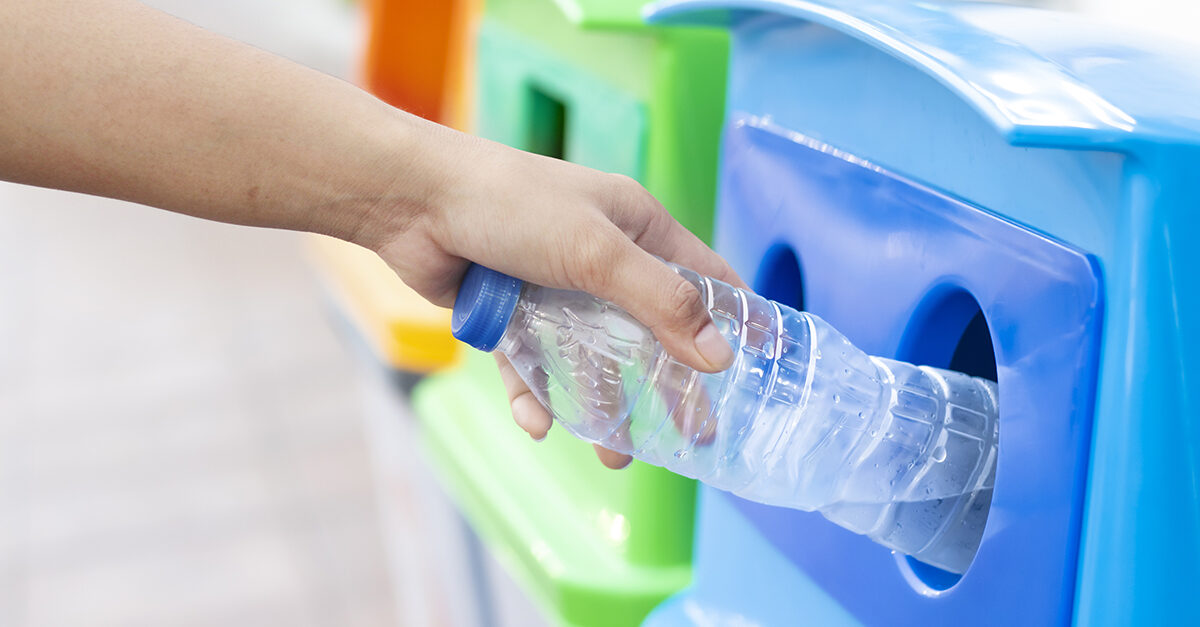Is recycling more of an afterthought than a strategy at your facility or business? Perhaps you’ve been wanting to put a heavier focus on improving recycling within your organization, but you don’t know where to start. Maybe you’re considering a recycling program for the very first time.
Even if you already have a recycling program in place, it never hurts to revisit and strengthen your program. If you aren’t recycling—or if you’re not doing so in a deliberate, structured way—the following steps can help you institute a robust recycling strategy for your facility or business.
Steps for successful recycling
While every program will have its unique situations and challenges, the following eight steps recommended by the U.S. Environmental Protection Agency (EPA) can help any organization get on the path toward a lasting, effective recycling program.
STEP 1:
Select a recycling coordinator
Appoint a recycling coordinator to oversee the entire program. This individual is responsible for designing the collection program, selecting the company to transport the materials, facilitating education and outreach, and tracking progress of the operation. In addition, the recycling coordinator will act as the program’s liaison, communicating with third-party contractors, in-house staff, and the public to deal with questions and concerns.
STEP 2:
Determine the ‘waste stream’
A “waste stream” is the lifecycle of trash—from where it begins to where it ultimately ends. By analyzing and fully understanding your organization’s waste stream, you can better determine what needs to be recycled and how to handle those materials in an effective and efficient manner. To do so, conduct a waste assessment to discover what is being thrown away, how much of each material is tossed, and what can be recycled.
Some of the materials that should be considered for recycling include:
- Aluminum
- Plastics
- Glass
- Corrugated cardboard
- Paper, including old newspaper.
Also keep in mind that food can be recycled, by donating surplus food and composting food scraps. In doing your assessment, remember that many recyclables are commodities—they can be sold. Don’t throw away revenue with your trash. Prices for recyclables, however, do fluctuate with supply and demand. Your local or state government recycling offices, the local chamber of commerce, or a local or regional recycling organization might be able to help you find or develop new markets for materials you intend to collect and recycle.
STEP 3:
Practice waste prevention
Waste prevention means using less material to get a job done—and ending up with less waste to manage. In addition to environmental benefits, waste prevention saves money. There are three ways to prevent waste: reducing, reusing, and donating. Here are some ideas for each category to include in your program:
Reduce
- Train staff on how to reduce the amount of office paper used
- Purchase products that use less or no packaging materials
- Purchase products made with recycled content
- Purchase products in bulk
- Switch to reusable transport containers.
Reuse
- Reuse corrugated boxes internally
- Reuse office furniture and supplies, such as interoffice envelopes, file folders, and paper clips
- Use durable rather than disposable towels, tablecloths, napkins, dishes, cups, and flatware
- Use incoming packaging materials for outgoing shipments.
Donate
- Donate unwanted supplies to local schools or nonprofit organizations
- Donate food scraps for use as animal feed
- Donate uneaten food to local food banks
- Advertise surplus and reusable items through a commercial-materials exchange
- Donate excess building materials to local low-income housing developers.
STEP 4:
Decide how to haul
You’ll need to decide how the recyclables in your program will be transported—either by using an outside contractor or via in-house staff.
If your organization chooses to contract with a hauler rather than haul recyclables directly, ask your current trash hauler if it also offers recycling pickup. This might be your best economical option. If your trash hauler does not provide recycling services, contact local recycling companies to check out your options.
Your facility or business can also consider using a resource management (RM) contract with haulers. Unlike traditional solid waste service contracts, RM compensates waste contractors based on achieving your organization’s waste reduction goals rather than on the volume of waste you dispose. As a result, RM aligns contractor incentives with your recycling goals and encourages innovative approaches that foster cost-effective resource efficiency through waste prevention and recycling.
If you elect to haul your own waste, you’ll need to take the time to train staff on how to collect and transport recyclables. Contact your local recycling center for more information and to find local drop-off sites.
In choosing a contractor, you might also need to choose between single-stream or multi-stream recycling collection:
- Single-stream collection uses one bin to collect all of the various types of recyclables.
- Multi-stream collection separates the various recyclables into different bins. This is called source separating. Some materials cannot be collected together, such as food waste with plastics. Aluminum, glass, and plastics, on the other hand, are frequently collected together.
Some questions to ask when choosing a contractor:
- What materials do you collect?
- Do you provide single-stream or multi-stream collection?
- Do you charge for collection?
- Do you pay for recyclables? How do you calculate their value?
- Do you offer a package deal that includes both waste and recyclables pickup?
- Will there be a lower price for refuse pickup if I use your recycling services?
- Do you provide collection containers?
- What is the pickup schedule? Do you pick up on call?
- Is there a minimum or maximum weight that you will pick up?
- What is the allowable amount of contamination?
- What are your reporting and accounting procedures?
- Could you provide client references?
- How long have you been in business?
STEP 5:
Include third-parties, staff, and volunteers
Once you’ve done your research and have developed your program, you need to share it with those involved to ensure that everyone is fully aware and on board regarding their own related responsibilities.
STEP 6:
Set up the collection program
If you can make recycling easy, you’ll have greater cooperation from the participants of your program. Consider the following to make things more convenient:
Collection bins and liners
To avoid confusion, recycling bins should look different from regular trash cans and be easy to identify. Lids with round holes on recycling bins bottles and cans will reduce contamination with other materials, such as food. The labels on the bins should be large and clear with both words and pictures indicating what should be placed within them. Make sure to clearly label the trash cans, too.
If your community has a curbside recycling collection program, try coordinating the color of the facility’s bins with the color of those on the curbside. Patrons will more likely associate the bin color with recycling, thus boosting their participation.
Bins are usually made from steel, corrugated cardboard, or plastic. Try to purchase collection bins made of postconsumer recycled content. When selecting bins to use, consider:
- Cost
- Durability
- Capacity
- Ease of handling
- Amount of recycled content.
You’ll also need appropriate plastic liners (bags) for the bins. Remember that as the bins are emptied, they will need new liners to collect more recyclables. If a single-stream collection system is being used, consider using clear bags so the contents can be easily identified once filled. Some bag manufacturers even print recycling symbols on their bags, and many make recycled-content bags for purchase.
Placement of collection bins
Collection bins should be placed closest to where recyclables are being generated, such as near tables within a lunchroom or next to copier machines. Your waste assessment should help identify these locations. Ideally, recycling collection bins should be placed next to every trash can within your facility. Make sure that it’s just as easy for the public to recycle as it would be to throw away other trash.
Storage and pickup
Once the materials have been removed from the collection bins, they need to be stored on-site until picked up by a hauler or delivered to a transfer station or materials-recovery facility. You’ll need answers to these questions:• Will the materials be stored on-site in a shed or a dumpster?
- Will the hauler provide a compactor as part of its contract?
- If not, is it feasible to invest in a compactor, which will decrease the number of pickups needed for the collected recyclables
Consider the size of the facility and available storage space when determining how frequently the recyclables must be hauled. Remember to also consider seasonal fluctuations in the quantity of recyclables generated (e.g., winter holidays and summer vacations). Regularly monitor how full the recycling dumpster is when gets emptied. If it is only half full, save money by reducing the number of times the hauler collects the materials.
STEP 7:
Facilitate outreach and education
Education will encourage participation in your recycling program, while helping to maintain order and efficiency within it. Use signs, displays, loudspeaker announcements, fliers, emails, and social media to reach out to your participants and teach them why, what, where, and how they should recycle.
STEP 8:
Monitor and evaluate your recycling program
As with any good plan, monitoring and evaluating your recycling program gives you the opportunity to assess and improve it as time goes by. Use your baseline data collected before you created the program to evaluate its progress.
In addition, you can determine your recycling rate using this formula:
- The recycling rate equals total recycled (by weight) divided by total discarded (by weight)
plus recycled (by weight). - Determine the recycling rate for all your recyclables combined and for each material independently. Track your progress over time as the recycling rate increases.




